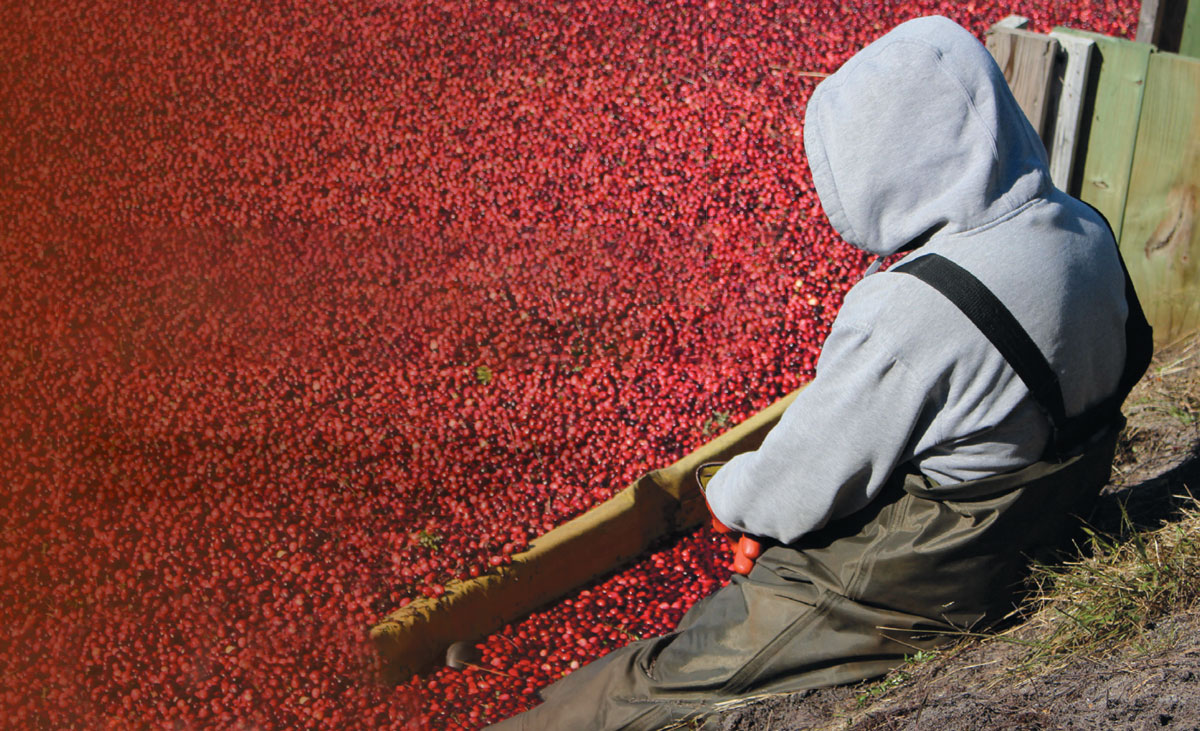What's in Season in New Jersey in Fall - Cranberries
With their vibrant color and unique taste, cranberries are a versatile fall treat.
season:
Mid September – Mid November
at the market:
Select cranberries that are firm and not shriveled or soft.
store:
Cranberries will stay fresh in the refrigerator for four weeks or longer, and can also be frozen.
wash:
Wash well just before using. Remove and discard any stems.
cook:
Due to their tart taste, cranberries often benefit from being sweetened with sugar, honey, maple syrup or other fruit juices. They can be easily cooked down into a cranberry sauce or used in an uncooked relish. Cranberries also work well in baked goods, such as muffins and nut bread.
BOUNCING BERRIES
Small air-filled chambers inside a cranberry cause the fruit to bounce, and also to float.1
1835
The year cranberry farming first began in New Jersey, in a bog near Burrs Mills in Burlington County. Some of New Jersey’s first cranberry farms are still operated by descendants of the original owners. The Lee Brothers Farm in Chatsworth has been growing and harvesting cranberries for over 150 years, since 1868.
3rd PLACE
NJ’s national ranking for cranberry production, behind Wisconsin (#1) and Massachusetts (#2). 2
Cranberries are one of the three major fruits native to North America (the others are blueberries and Concord grapes). Long before the first European settlers arrived, Native Americans used cranberries for food, clothing dye, and medicine.<sup>1</sup>
Cranberries grow on low shrubs and vines very close to the ground.
Berries originally were harvested by hand. Since the 1960s, the wet-picking method has been used: After the berries have ripened, the dry bogs are flooded with approximately 18 inches of water. A harvesting machine then gently knocks the berries off the vines in the bog. Floating berries are pushed to the side where a conveyor belt lifts them to a truck.
95%
Portion of NJ’s annual cranberry crop sold to Ocean Spray Cranberries, Inc., a grower-owned cooperative with a receiving station in Chatsworth.
CHATSWORTH CRANBERRY FESTIVAL
October 21 & 22
9am to 4pm
Route 563 at Route 532,
Chatsworth, NJ
This annual festival celebrates New Jersey’s cranberry harvest, the third-largest in the United States, and pays tribute to the Pine Barrens and its cranberry culture. Featuring a juried craft show with nearly 150 vendors, food, and live music. Sponsored by the Festival Committee of Chatsworth. cranfest.info
What’s in a Name?
Native Americans called the red berries “sasemineash” and “pakimintzen.” Pilgrims and other early settlers named the fruit “crane berry” because its pink blossom resembled the head of a crane. The name was eventually shortened to cranberry.
PINELANDS:
The New Jersey Pinelands is one of the few places where cranberries grow naturally, thanks to the area’s sandy, acidic soil and high water table. Water from the underlying aquifer creates bogs conducive to cranberry growing and harvesting.
WHITESBOG VILLAGE:
During the early 1900s, Whitesbog Village in Browns Mills, operated by the Fenwick family, was the largest cranberry farm in New Jersey. Today the village and its surrounding 3,000 acres of cranberry bogs and Pine Barren forests are listed on both the National and State Registers of Historic Sites.3 whitesbog.org
1 American Cranberry Growers Association. njcranberries.org
2 NJ Department of Agriculture. findjerseyfresh.com
3 Whitesbog Preservation Trust. whitesbog.org







